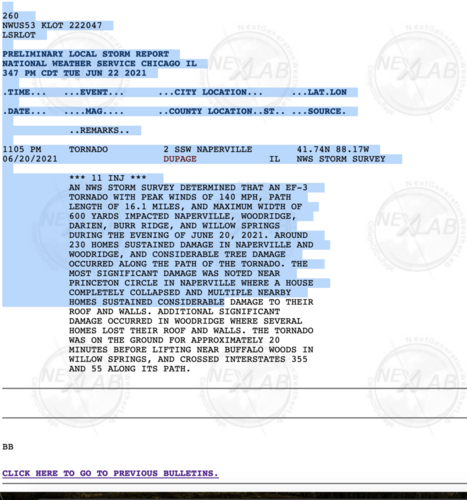John Farley
Supporter

‘Like a sonic boom.’ Overnight tornado — with winds over 135 mph — roars through Naperville, Woodridge, Darien. Hundreds of structures damaged, but no fatalities reported.
Like thousands of residents in Naperville and nearby towns, Dennis Wenzel promptly headed to the basement of his Princeton Circle home when the tornado sirens went off Sunday night. He emerged to a…


